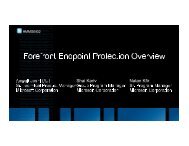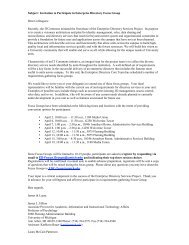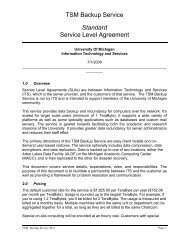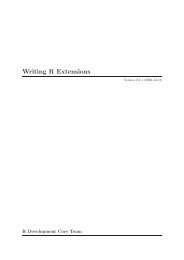What documentation exists for R?
What documentation exists for R?
What documentation exists for R?
Create successful ePaper yourself
Turn your PDF publications into a flip-book with our unique Google optimized e-Paper software.
Chapter 2: R Basics 3<br />
2 R Basics<br />
2.1 <strong>What</strong> is R?<br />
R is a system <strong>for</strong> statistical computation and graphics. It consists of a language plus a<br />
run-time environment with graphics, a debugger, access to certain system functions, and<br />
the ability to run programs stored in script files.<br />
The design of R has been heavily influenced by two existing languages: Becker, Chambers<br />
& Wilks’ S (see Section 3.1 [<strong>What</strong> is S?], page 12) and Sussman’s Scheme. Whereas the<br />
resulting language is very similar in appearance to S, the underlying implementation and<br />
semantics are derived from Scheme. See Section 3.3 [<strong>What</strong> are the differences between R<br />
and S?], page 13, <strong>for</strong> further details.<br />
The core of R is an interpreted computer language which allows branching and looping<br />
as well as modular programming using functions. Most of the user-visible functions in R<br />
are written in R. It is possible <strong>for</strong> the user to interface to procedures written in the C, C++,<br />
or FORTRAN languages <strong>for</strong> efficiency. The R distribution contains functionality <strong>for</strong> a large<br />
number of statistical procedures. Among these are: linear and generalized linear models,<br />
nonlinear regression models, time series analysis, classical parametric and nonparametric<br />
tests, clustering and smoothing. There is also a large set of functions which provide a<br />
flexible graphical environment <strong>for</strong> creating various kinds of data presentations. Additional<br />
modules (“add-on packages”) are available <strong>for</strong> a variety of specific purposes (see Chapter 5<br />
[R Add-On Packages], page 22).<br />
R was initially written by Ross Ihaka and Robert Gentleman at the Department of<br />
Statistics of the University of Auckland in Auckland, New Zealand. In addition, a large<br />
group of individuals has contributed to R by sending code and bug reports.<br />
Since mid-1997 there has been a core group (the “R Core Team”) who can modify<br />
the R source code archive. The group currently consists of Doug Bates, John Chambers,<br />
Peter Dalgaard, Robert Gentleman, Kurt Hornik, Stefano Iacus, Ross Ihaka, Friedrich<br />
Leisch, Thomas Lumley, Martin Maechler, Duncan Murdoch, Paul Murrell, Martyn Plummer,<br />
Brian Ripley, Duncan Temple Lang, Luke Tierney, and Simon Urbanek.<br />
R has a home page at http://www.R-project.org/. It is free software distributed<br />
under a GNU-style copyleft, and an official part of the GNU project (“GNU S”).<br />
2.2 <strong>What</strong> machines does R run on?<br />
R is being developed <strong>for</strong> the Unix, Windows and Mac families of operating systems. Support<br />
<strong>for</strong> Mac OS Classic ended with R 1.7.1.<br />
The current version of R will configure and build under a number of common Unix<br />
plat<strong>for</strong>ms including cpu-linux-gnu <strong>for</strong> the i386, alpha, arm, hppa, ia64, m68k, mips/mipsel,<br />
powerpc, s390, sparc (e.g., http://buildd.debian.org/build.php?&pkg=r-base), and<br />
x86 64 CPUs, powerpc-apple-darwin, mips-sgi-irix, rs6000-ibm-aix, and sparc-sun-solaris.<br />
If you know about other plat<strong>for</strong>ms, please drop us a note.








